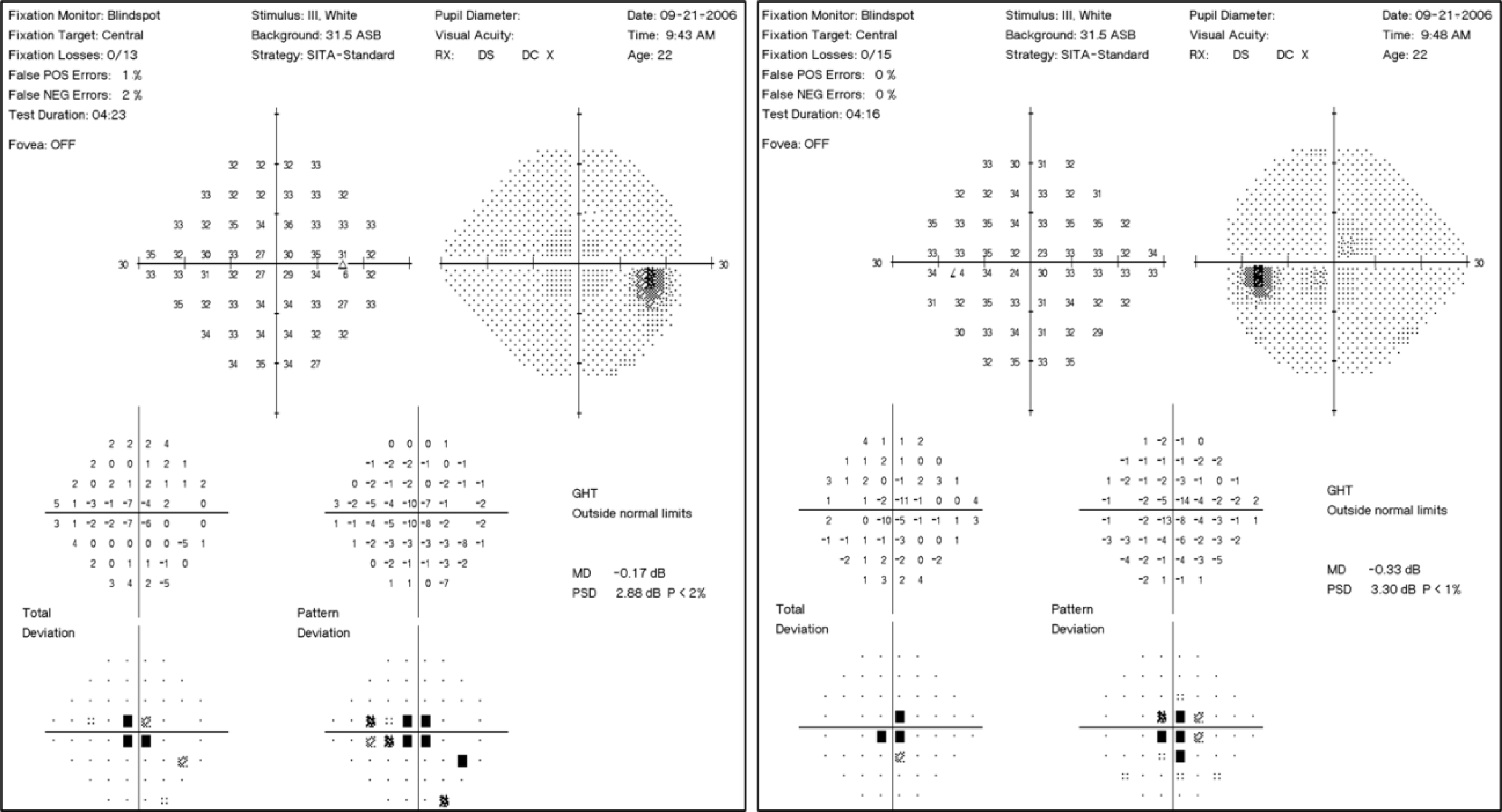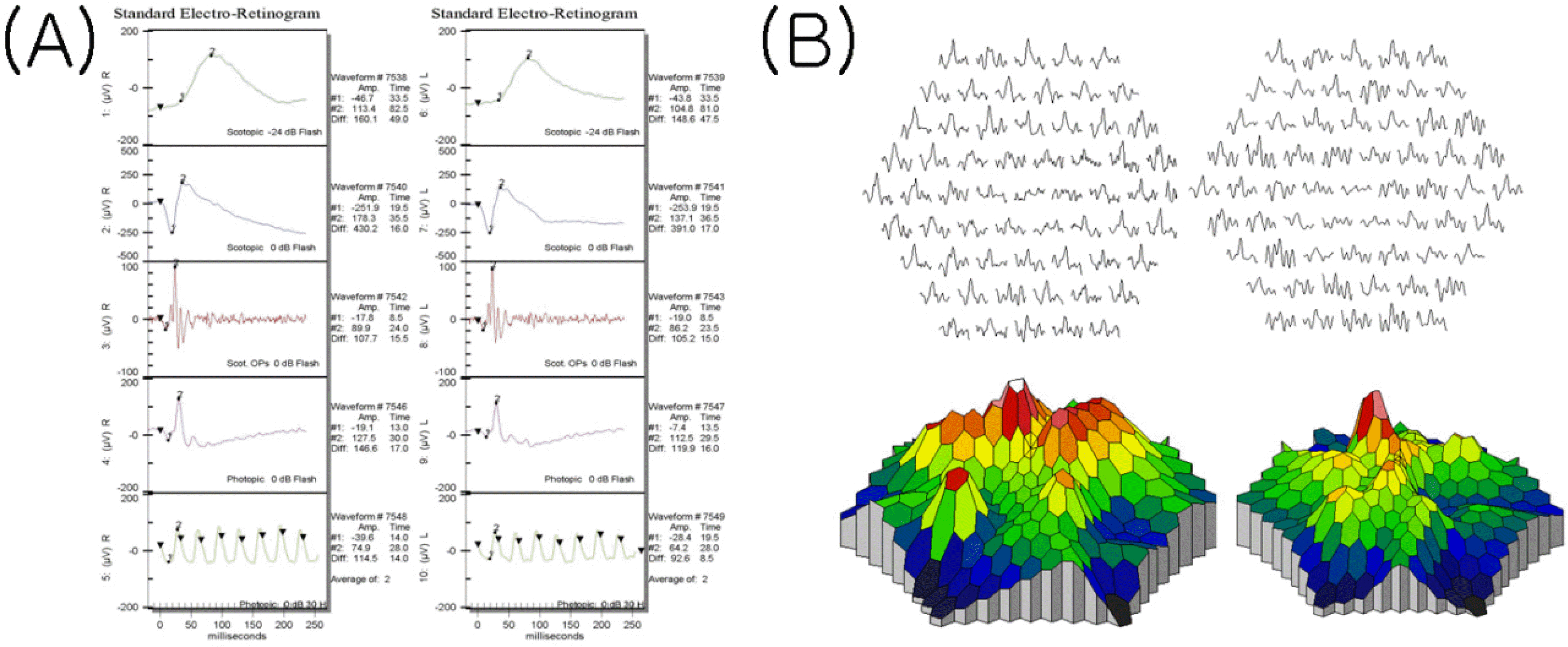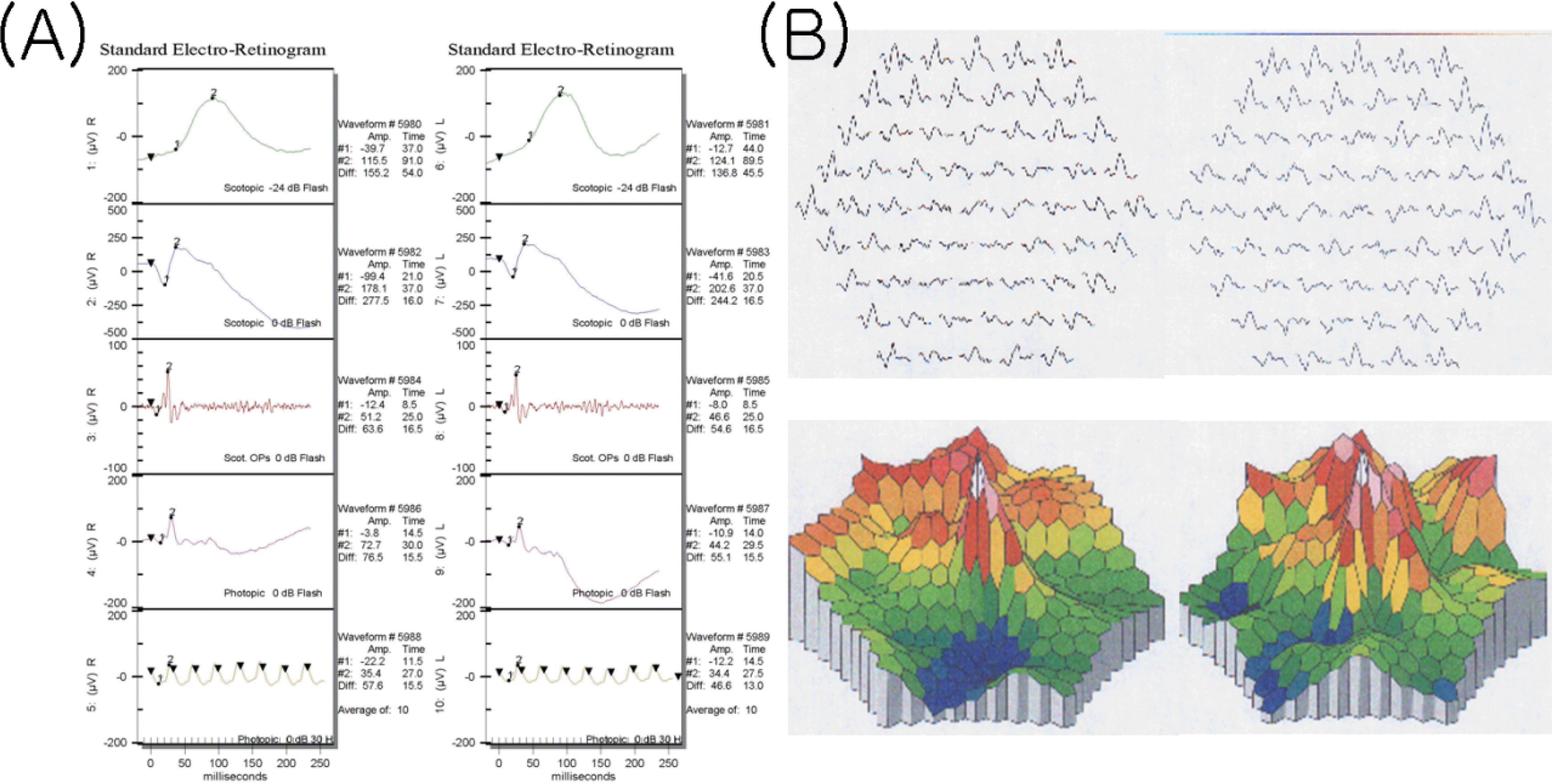Abstract
Purpose
We report two familial cases of occult macular dystrophy (OMD) presenting with a progressive decrease in central vision.
Case summarys Both patients exhibited a normal ophthalmologic examination including slit lamp biomicroscope, fundus examination, fluorescein angiography, and full-field electroretinogram. However, there were central visual field defects on a Humphrey static visual field test (C 24-2) and abnormal multifocal electroretinogram (mfERG) findings affecting the central portion of the test field. Foveal thinning was also observed by optical coherence tomography images in 1 case. These findings are consistent with the clinical characteristics of occult macular dystrophy, and close observation was recommended.
Conclusions
OMD is a disease characterized by a reduction in central visual acuity without visible fundus abnormalities and full field ERG. It may be misdiagnosed as optic nerve disease, a central nervous system problem, non-organic visual disorder or malingering; therefore, mfERG is essential for the diagnosis of this rare type of macular dystrophy.
Go to : 
References
1. Miyake Y, Ichikawa K, Shiose Y, Kawase Y. Hereditary macular dystrophy without visible fundus abnormality. Am J Ophthalmol. 1989; 108:292–9.

2. Wildberger H, Niemeyer G, Junghardt A. Multifocal electroretinogram (mfERG) in a family with occult macular dystrophy. Klin Monatsbl Augenheilkd. 2003; 220:111–5.
4. Miyake Y, Horiguchi M, Tomita N, et al. Occult macular dystrophy. Am J Ophthalmol. 1996; 122:644–53.

5. Sandberg MA, Brockhurst RJ, Gaudio AR, Berson EL. The association between visual acuity and central retinal thickness in retinitis pigmentosa. Invest Ophthalmol Vis Sci. 2005; 46:3349–54.

6. Kondo M, Ueno S, Piao CH, et al. Occult macular dystrophy in an 11 year old boy. Br J Ophthalmol. 2004; 88:1602–3.

7. Piao CH, Kondo M, Tanikawa A, et al. Multifocal electroretinogram in occult macular dystrophy. Invest Ophthalmol Vis Sci. 2000; 41:513–7.
8. Kondo M, Ito Y, Ueno S, et al. Foveal thickness in occult macular dystrophy. Am J Ophthalmol. 2003; 135:725–8.

9. Brockhurst RJ, Sandberg MA. Optical coherence tomography findings in occult macular dystrophy. Am J Ophthalmol. 2007; 143:516–8.

10. Ergun E, Hermann B, Wirtitsch M, et al. Assessment of central visual function in Stargardt disease/fundus flavimaculatus with ultrahigh-resolution optical coherence tomography. Invest Ophthalmol Vis Sci. 2005; 46:310–6.
Go to : 
 | Figure 1.Ophthalmoscopic (top) and fluorescein angiographic (bottom) findings in the right (shown left) and left (shown right) eyes of patient 1. There is no detectable abnormality at the disc and around the macular regions of either eye. |
 | Figure 2.Humphrey C24-2 perimetry of the right (shown left) and left (shown right) eyes of patient 1. There is a central scotoma in both eyes. |
 | Figure 3.(A) The photopic and scotopic full field ERG was normal in both eyes of patient 1. (B) The multifocal electroretinographic responses from the central areas are attenuated in the right (shown left) and left (shown right) eyes. |
 | Figure 4.The 3 mm horizontal scans of the optical coherence tomography images obtained from patient 1 demonstrating foveal thickness of 114 µm in the right eye (left), 108 µm in the left eye (right). |
 | Figure 5.Ophthalmoscopic (top) and fluorescein angiographic (bottom) findings in the right (shown left) and left (shown right) eyes of patient 2. There is no detectable abnormality at the disc and around the macular regions of either eye. |
 | Figure 6.Humphrey C24-2 perimetry of right (shown left) and left (shown right) eyes of patient 2. There is a large central field defect in both eyes. |




 PDF
PDF ePub
ePub Citation
Citation Print
Print




 XML Download
XML Download